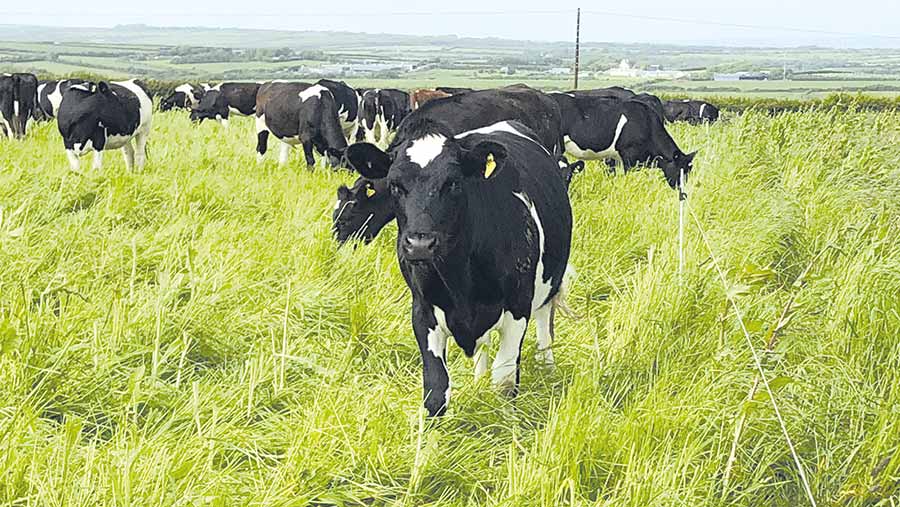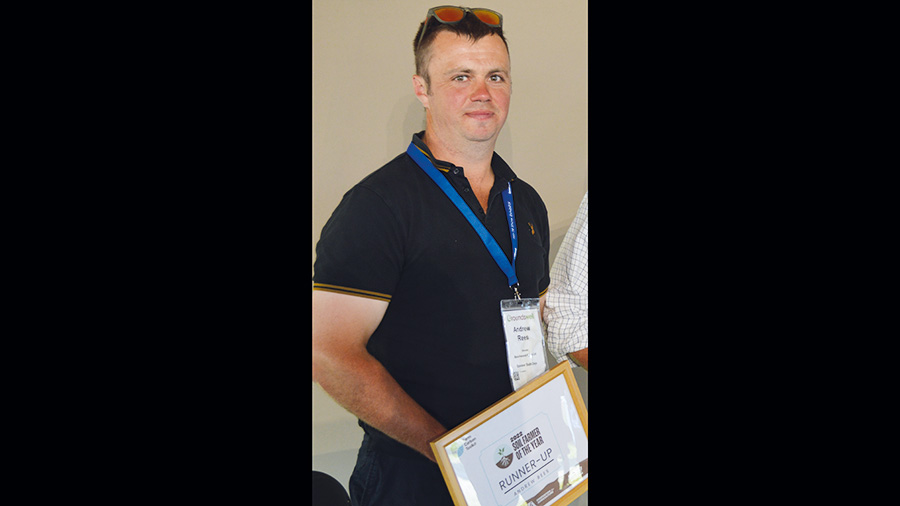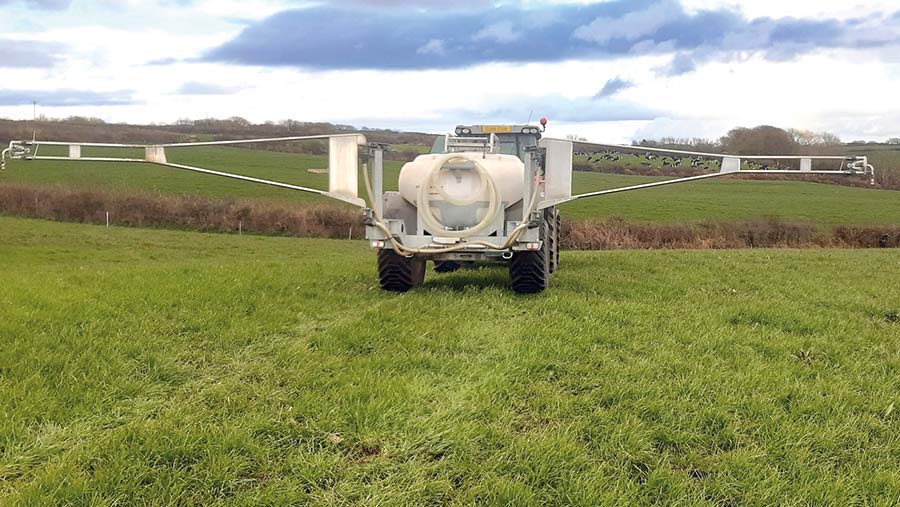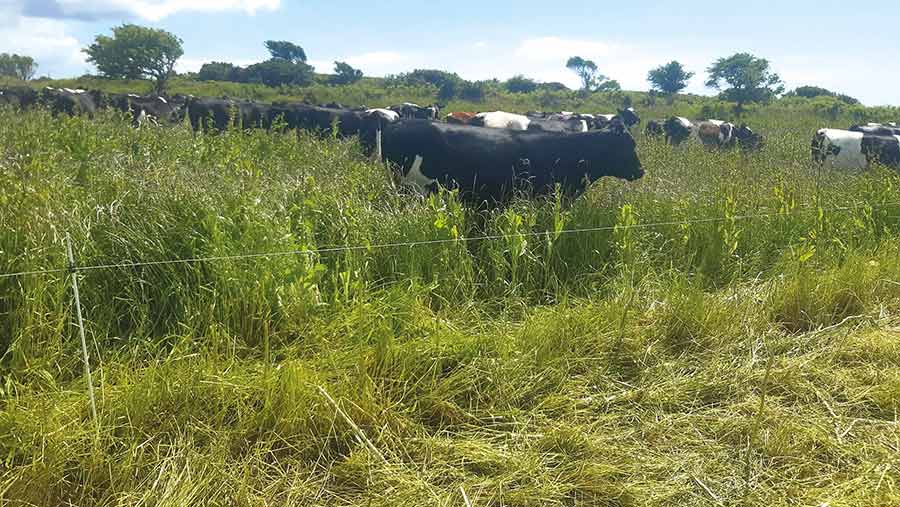How soil winner cut N 60% with no loss of grass growth
 © Emma Adams, Farm Carbon Toolkit
© Emma Adams, Farm Carbon Toolkit The 2022 Soil Farmer of the Year runner-up has cut fertiliser use and introduced herbal leys and new grazing methods on his Haverfordwest dairy farm.
Andrew Rees started to question the grassland management at Moor Farm, Haverfordwest, where he farms with his wife, Vicky, and mother, Jean, three years ago.
Since then, he has cut nitrogen use by more than 60% and planted herbal leys or cover crops across a fifth of the farm.
See also: 8 expert tips for efficiently grazing herbal leys
Farm facts – Moor Farm, Haverfordwest
- 162ha (400 acres), with 105ha (259-acre) grazing platform, plus youngstock and silage ground
- Soil predominantly silty clay loam
- 310-head spring-calving herd
- British Friesian Walwyn herd
- Milking twice a day
- Supplying First Milk

Andrew Rees © MAG/David Jones
Foliar fertiliser application
A switch to foliar application more than halved Mr Rees’s fertiliser bill between 2019 and 2021.
During that period, nitrogen use has been cut from 220kg N/ha to 86kg N/ha on the grazing platform, without a reduction in grass growth.
Fertiliser is now sprayed onto leaves, rather than being applied to soil, using a Tow and Fert machine imported from New Zealand.

© Andrew Rees
Ley diversity
Seeing the success of herbal leys for the soil and the animals’ preference for them, Mr Rees is planting more each year.
“At the beginning of the year, 12% of the farm was down to herbal leys. We have a couple [of leys] within the grazing platform and we will get more, but proportionately, there are more across our youngstock block,” he says.
This year, a further 10% of the farm has been drilled with a herbal ley or diverse cover crop containing clover and herbs. These will be grazed in late summer before a mix of grasses is drilled into it.
“With the diversity of annuals and roots in the cover crop, the theory is that it will give the soil a reboot,” he says.

© Andrew Rees
Animal impact through grazing
Youngstock are currently on a 42-day rotation, but if weather stays fairly dry, this is likely to be extended to 60-90 days.
Current stocking density is equivalent to about 1,100 head a hectare, with the heifers moved three times a day to get an even animal impact across the paddock.
“In paddocks that were stocked last year at high density with long rests, the soil seems a lot more friable and worm activity and rooting all look a lot healthier.
On one paddock where we did very long rests and laid down a lot of litter, production this spring with no input was quite impressive,” Mr Rees says.
He has recorded baseline measurements for the soil though Agricarbon and 3LM and plans to use these to monitor further progress.
His next step is to move cows to a longer grazing rotation without compromising grass quality or milk production and make better use of slurry management and composting.
Three key learnings in three years at Moor Farm
1. Drilling
- First method used: Direct-drilling all herbal leys
- Challenge: Spring establishment was tricky on the clay soil
- Improved method: Light cultivation before drilling or broadcasting pre-soaked seed
2. Grazing
- First method: Following the “graze a third, trample a third, leave a third” principle in ryegrass-dominated paddocks
- Challenge: A lot of stem/stalk was left behind and returning to paddocks before plants were fully recovered resulted in a drop in energy density of the sward
- Improved method: Grazing paddocks more completely, but not returning until they are fully recovered. This is resulting in stronger plants with longer roots
3. Outwintering youngstock
- First method: Outwintering on kale and bales
- Challenge: Grass recovery after winter damage
- Improved method: Bale grazing on deferred grass, moving stock every two days
The numbers
- 12t DM/ha Pasture utilised in 2021 (an increase from 11.6t DM/ha in 2019 and 10.9t DM/ha in 2020)
- £124/ha Saving in fertiliser spend, from £234/ha in 2019 to £110/ha in 2021
- 1,100 head a hectare Stocking density of grazing heifers
The Soil Farmer of the Year competition is organised by Farm Carbon Toolkit and results were announced at Groundswell.
